Fruits in Korea are notorious for being larger, more refreshing, and juicier than their counterparts from other countries. For example, Korean strawberries are known to be sweeter and larger than the ones grown in the US.
Yuzu, which really originated from China, is widely used to make tea, desserts, and marmalades in Korea, but rarely seen outside of East Asia. Korean fruit ice (bingsu) is the best remedy for the scorching summer, and locals will always have room for this treat no matter how heavy their meal was.
Bingsu is their traditional version of ice cream, and the flavor depends on the fruits used to make it. This popular Korean dessert is something you should give a try if you find yourself in Korea, and they even make vegan versions in some places!
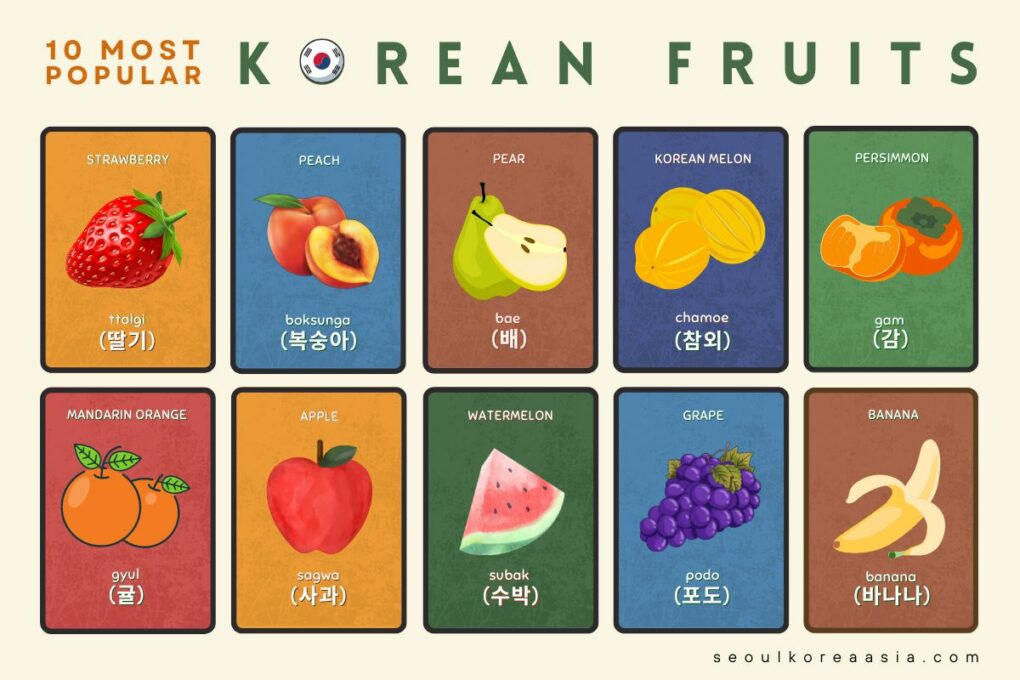
Jump To
- Korean Fruits & Seasonal Eating
- Korean Shaved Ice (Fruit Bingsu)
- 19 Korean Fruits + Recipes
- Shine Muscat Grapes (shine muscat, 샤인머스켓)
- Blueberries (Beuluberi, 블루베리)
- Hallabong (hallabong, 한라봉)
- Persimmon (gam, 감)
- Yuzu (yuja, 유자)
- Watermelon (subak, 수박)
- Korean Blackberry (bokbunja, 복분자)
- Jeju Apple Mangoes (aemangbing, 애망빙)
- Strawberries (ttalgi, 딸기)
- Figs (muhwagwa, 무화과)
- Korean Pears (bae, 배)
- Peaches (boksunga, 복숭아)
- Korean Melons (chamoe, 참외)
- Kyoho Grapes (kyoho, 교호)
- Jeju Mandarins (gyul or kyul, 귤)
- Apples (sagwa, 사과)
- Magnolia Berry (omija, 오미자)
- Green Plums (maesil, 매실)
- Cherry Tomatoes (tomato, 토마토)
- Banana (banana, 바나나)
Korean Fruits & Seasonal Eating
Korean fruit-based desserts or dishes typically depend on the season when that fruit is available. For instance, summer in Korea can get super-hot, so most people crave refreshing fruits like watermelon, melons, and grapes.
Autumn is the best time to enjoy food festivals, and street vendors often take out their biggest peaches, apples, and pears. As soon as winter rolls in, Koreans stockpile persimmons and shine muscat grapes because these are known for their hydration benefits, especially if the weather tends to make your skin extremely dry.
In spring, locals satisfy their sweet tooth by eating Jeju mandarins and strawberries. One of the shocking discoveries you will ever have here is the price of fruit. This is because the land typically allocated for fruit trees is small compared to rice and vegetables.
Moreover, the soil is not always nutritious enough to meet the requirements needed to grow fruit (except for citruses, apples, grapes and tomatoes), so they usually export crowd favorites like bananas, pineapples, and avocados from tropical countries like the Philippines, Thailand, or Indonesia.
Rural areas, however, have young farmers moving permanently from the city to embrace the quiet lifestyle. Many of them have even started farms in Gyeonggi and Nami that you can visit to have an interactive experience like strawberry picking or fruit mochi-making.
Aside from bingsu and the cute fruit desserts you spot in Korean cafés, locals also use fruit for salads and shakes and dried fruit detox tea. There are even soju drinks with fruit flavors (I highly recommend peach soju).
During the holidays, Koreans believe that gifting fruits like pears, melons, and large apples are great ways to express good will, peace, and celebration. As a result, during the Chuseok and Seollal seasons, grocery stores and local markets are full of fancy fruit boxes (in addition to the Spam boxes).
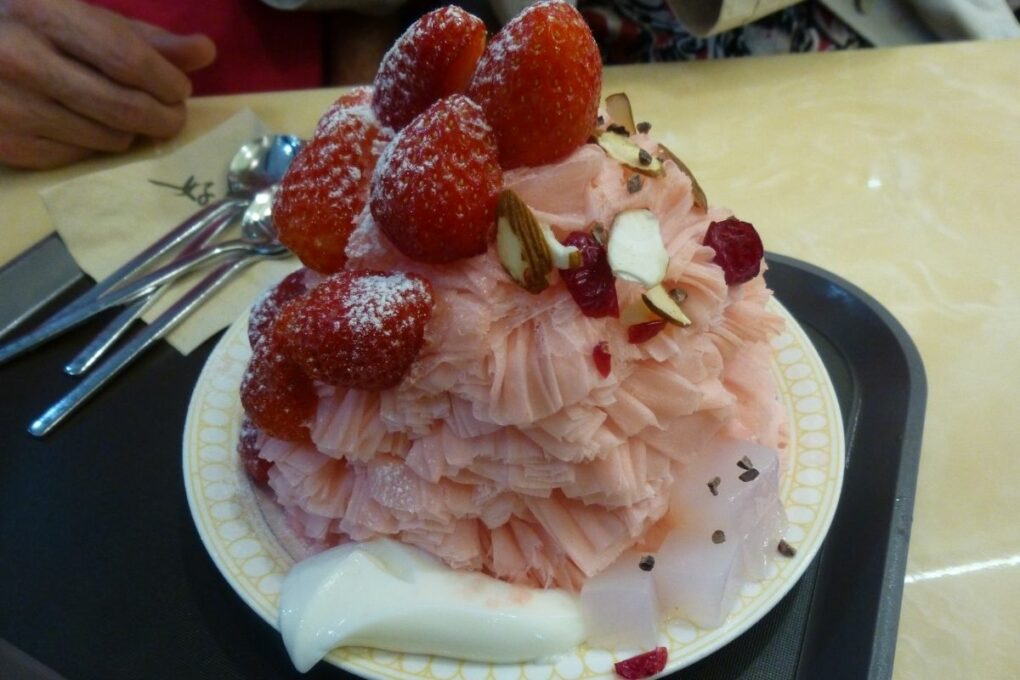
Korean Shaved Ice (Fruit Bingsu)
Bingsu, or Korean fruit ice cream, is a beloved after-dinner treat that people of all ages enjoy. In a bowl, condensed milk is poured over shaved ice before adding red beans, and in more modern versions, fresh fruit.
Sometimes they even put ice cream on top and drizzle the dessert with syrups and chopped frozen fruits. In the warmer months, bingsu is available in different flavors based on what fruits are in season, and they tend to come in individual fruit flavors rather than a medley.
It's a treat that Korean kids can’t stop thinking about the moment the weather turns, because the sweltering Korean summer tends to make you want to eat something really, really cold. In fact, if you visit Korea during the summer, I highly recommend bringing light shirts, hats, and your favorite Korean sunscreen.
In Korea, café culture is rapidly progressing. Each town has a main restaurant & café street, which comprises an entire area filled with nothing but coffee shops, and red bean and fruit bingsu of all shapes and sizes are available in many of them.
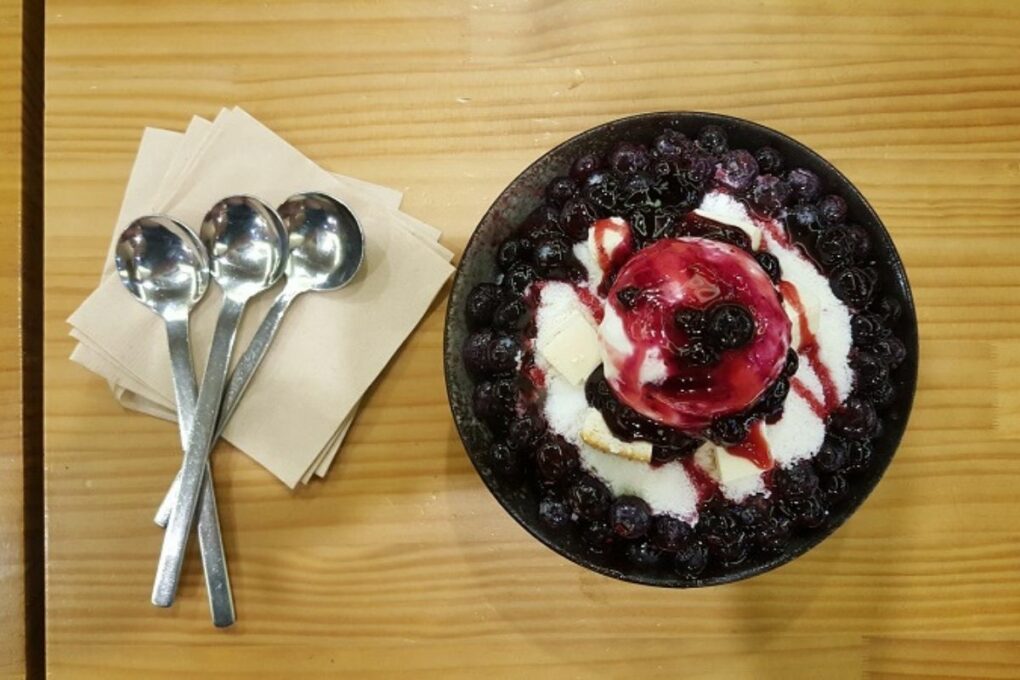
19 Korean Fruits + Recipes
Shine Muscat Grapes (shine muscat, 샤인머스켓)
Locals are a big fan of the Shine Muscat for plenty of reasons. These grapes are perfect for snacking because they’re large and juicy, with a bit of sweet mango flavor. They taste amazing in any form, whether in tea or dessert or a smoothie.
These bright green grapes are harvested in the vineyards of rural areas like Sang-ju and Gimcheon from July to September, and Shine Muscat farmers are known for being meticulous in ensuring that a single grapevine only contains a max of two bunches to preserve the flavor.
Click here to try Roll Cake made with Shine Muscat
Blueberries (Beuluberi, 블루베리)
Blueberries are considered a summertime staple in Korea’s Gangwon province because most farms in this area produce high-quality loads of this fruit. Perfect as a complement to your frozen yogurt, blueberries are a powerhouse of vitamin-rich goodness that helps prevent cancer and strengthen your cardiovascular system.
If your kids are looking for a fun, farming experience, you can take them to summer day camps in Gangwon so that they can try making their famous blueberry rice cakes.
Click here to try brie hotteok made with blueberry

Hallabong (hallabong, 한라봉)
Hallabong oranges are well-known for their gourd-like shape. In fact, they were named as such because they resemble the Hallasan Mountain on Jeju Island! It’s easy to peel its skin off, and is sweeter than most citrus fruits. Visit Jeju during winter to spring to try these cute-shaped fruits from any of their agricultural greenhouses.
Click here to try jelly made with Hallabong
Persimmon (gam, 감)
Persimmons are a clear sign that autumn has finally arrived in Korea. Everywhere you go, you will see this fruit displayed in storefronts, markets, and even cafés; in rural areas the bright orange fruits dot bare trees just in time for Halloween in Korea.
Restaurants near persimmon farms in Korea also give these fruits away for free because of its overwhelming abundance at certain points in the season. Best thing about this fruit: no need to peel it. Just bite and enjoy the mildly sweet, honey-like jelly bits inside.
Click here to try Sujeonggwa made with persimmon
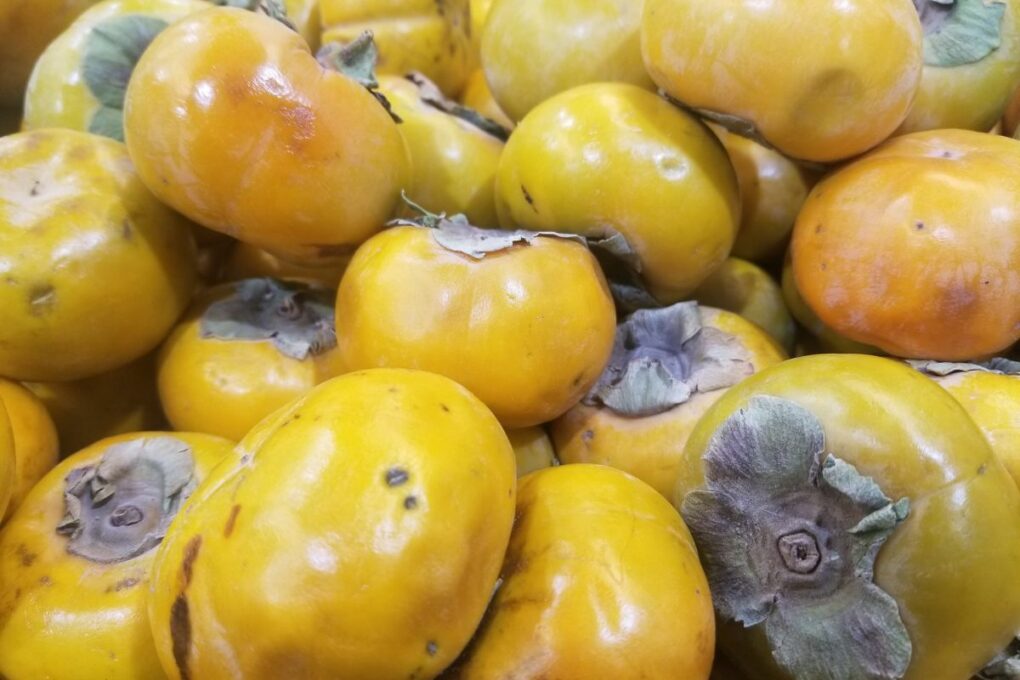
Yuzu (yuja, 유자)
Yuja is everywhere in Korea, these days. You can find it in cafés, milk tea shops, and restaurants. However, this fragrant fruit is not entirely Korean, since its roots hail from China, but the Yuzu has an appealingly complex fragrance Koreans like.
In fact, they have figured out a way to bring out its delicious taste to their tables in various ways , like mixing it into honey, yogurt, or bonbons). Yuzu creations are usually on-trend a few months before the winter cold kicks in.
Click here to try yuja curd made with yuja
Watermelon (subak, 수박)
The beauty about this Korean summer fruit is that it has the highest sugar content of all the berries (yes, it is a berry). This is also exactly why a lot of university students like using it as the base for fruit bingsu when they’re craving something sugary and cold in the heat.
Older adults may prefer making subak hwachae, a traditional chilled watermelon fruit punch that easily quenches a dry throat (alcohol optional).
Click here to try bingsu made with watermelon

Korean Blackberry (bokbunja, 복분자)
This is not exactly a blackberry, but more similar to a type of raspberry because of its shape and flavor. Blackberries also have a strong, tart taste, while bokbunja are moderately sweet. These South Korean fruits are often used in a liquor called bokbunjaju, which you can find at most convenience stores in Korea.
Click here to try vinegar made with bokbunja
Jeju Apple Mangoes (aemangbing, 애망빙)
Apple mangoes are larger than the typical mango and have a fascinating gradient of yellow to red. If you open the fruit, you get a meaty helping of sweetness. Prepare to pay a bit extra, because high end hotels in Korea (like Shilla Stay) use this fruit for their desserts, instantly making this a luxury fruit.
Click here to try cobbler made with apple mango
Strawberries (ttalgi, 딸기)
South Korean farmers really take pride in their strawberries because they’re sweet, vibrant, and extremely delicious compared to other types. In fact, you don’t need to add extra sugar because they’re already sweet by themselves.
There are also many varieties of strawberries in Korea, but Korean farmers have figured out a way to grow strawberries larger than an egg called King’s Berry Strawberries, though most Koreans still prefer the small sweet ones.
Click here to try homemade milk made with strawberries
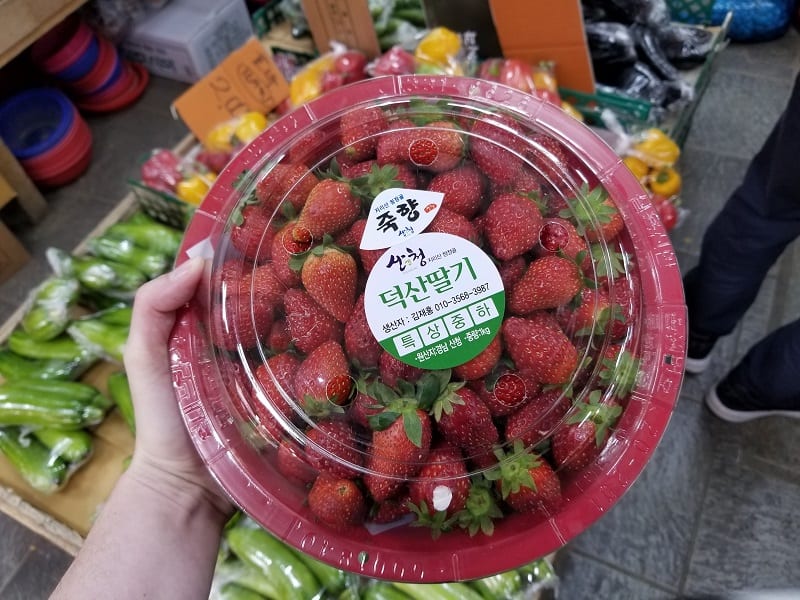
Figs (muhwagwa, 무화과)
Figs are almost always from the Yeongam region in the southern part of the Korean peninsula, known for its breathtaking views of the Yellow Sea and the surrounding mountains. Figs are often found close to the bay to catch the heat of the sun required to make them grow bigger.
Korean figs can sometimes taste earthy, but there are moments when you detect a hint of honey-like sweetness. You can enjoy this fruit in the early summer or sometime around early autumn.
Click here to try green fig kimchi made with figs
Korean Pears (bae, 배)
Korean pears are rounder and larger compared to the average. Plus, they’re easy to slice in half because of their extremely thin skin. They have a mild, pleasant flavor that goes well with any kind of tea or salad.
People in Korea often gift friends or family with pears if they wish them good health. This makes sense if you think back a few hundred years, because Korean pears have a ton of nutrients for your digestive health, like fiber, potassium, and folate.
Click here to try baesuk made with Korean pear

Peaches (boksunga, 복숭아)
Korean legends often say that if you discover a peach with two stones at the center, expect the incoming winter to be mild.
Even though this isn’t a very accurate test, it does go to show that this fruit has been a big part of their culture for centuries. In fact, peaches are a symbol of honor, prosperity, and happiness in Korea. Try them sometime around the summer, usually June and July, to enjoy its refreshing taste to the fullest.
Click here to try Greek Momo made with peach
Korean Melons (chamoe, 참외)
Chamoe, along with watermelons, are fruits that signify to Koreans that summer is finally here. This fruit came to Korea after it was introduced to them by traders from the Silk Road during the Three Kingdoms Period (220-280 AD), and it’s remained popular in the many intervening centuries.
Eventually, South Korea found ways to grow their own variety of the plant, and it produced a smaller and crisper musk melon that has somehow retained a lot of its water and sweetness.
Click here to try cold spicy noodles made with chamoe
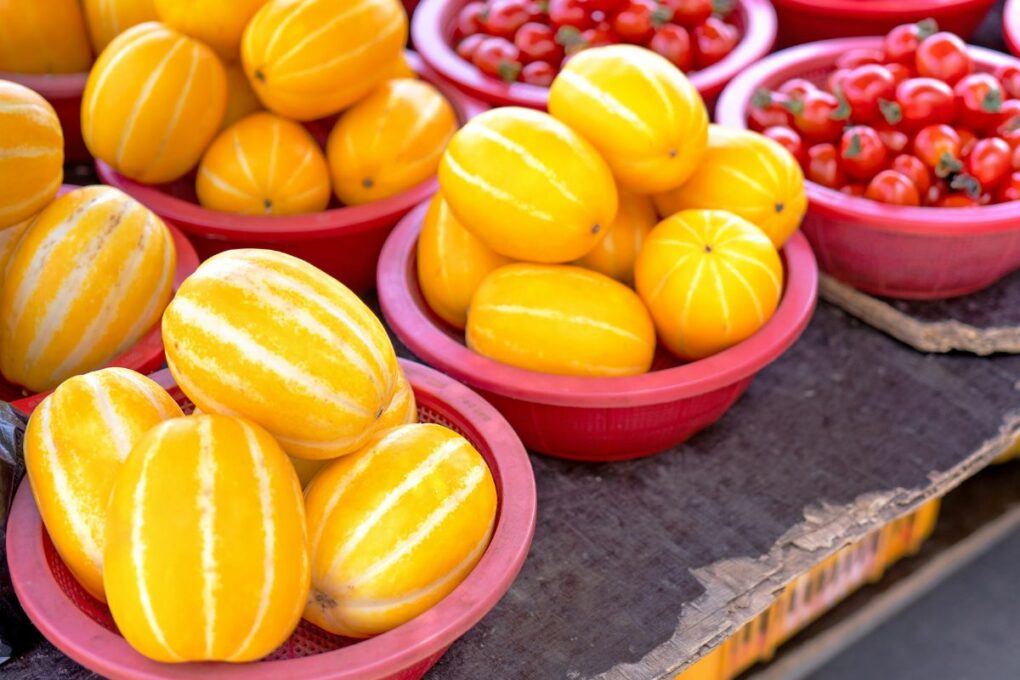
Kyoho Grapes (kyoho, 교호)
Fox grapes are very popular in East Asia. Aside from its fascinating dark blue hue, it tastes a lot like sweet wine, making it a popular fruit among older people. It’s expensive too, because the requirements to grow these grapes include meticulous attention and care.
For these reasons they’re only available for a brief moment between August and September, and since they grew them in my province, they featured prominently at my town’s carnival each summer.
Click here to try tarts made with Kyoho grapes
Jeju Mandarins (gyul or kyul, 귤)
Just like other fruits in Korea, Jeju mandarins are sweet, but not in the way you’d expect. In fact, a Jeju mandarin is sweeter than the hallabong, and it has a refreshing tanginess like no other.
These oranges are even easy to peel, so it’s no wonder that the royalty used to hoard these Jeju oranges all to themselves.
Click here to try Orange Bundt Cake made with Jeju Mandarins
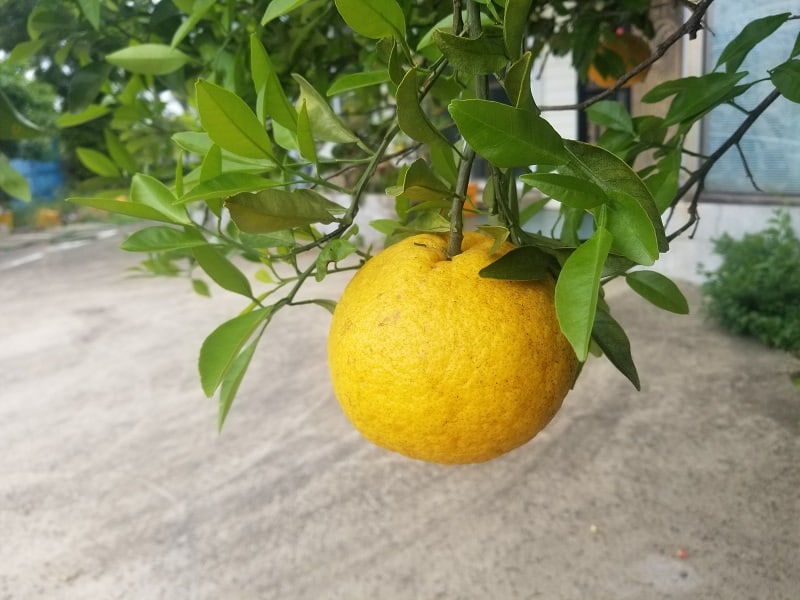
Apples (sagwa, 사과)
Whenever you visit a Korean supermarket, one of the most surprising things you’ll notice in the fruit section is that their apples are huge. The bigger the apple, the better. Red apples are usually appreciated as gifts in Korea, because these signify “good health and prosperity”.
The best and juiciest apples can be found in Cheongsong-gun County, sometime in November during their annual apple festival.
Click here to try caramel apple hotteok made with apple
Magnolia Berry (omija, 오미자)
Omija literally means “five-flavor berries.” You can’t exactly pinpoint what it tastes like, and don’t try eating a few to check, either – these berries are not safe to eat. The best way to taste the “five flavors” is to drink them as tea.
And you don’t use the usual hot water method to make it, because if you steep these berries in hot water for a long period of time, the bitter and sour flavors will intensify.
Use the cold water method instead, and I’d generally recommend you mix this with honey or sugar to tone down the taste (because your taste buds will definitely be overwhelmed).
Click here to try omija hwachae made with omija
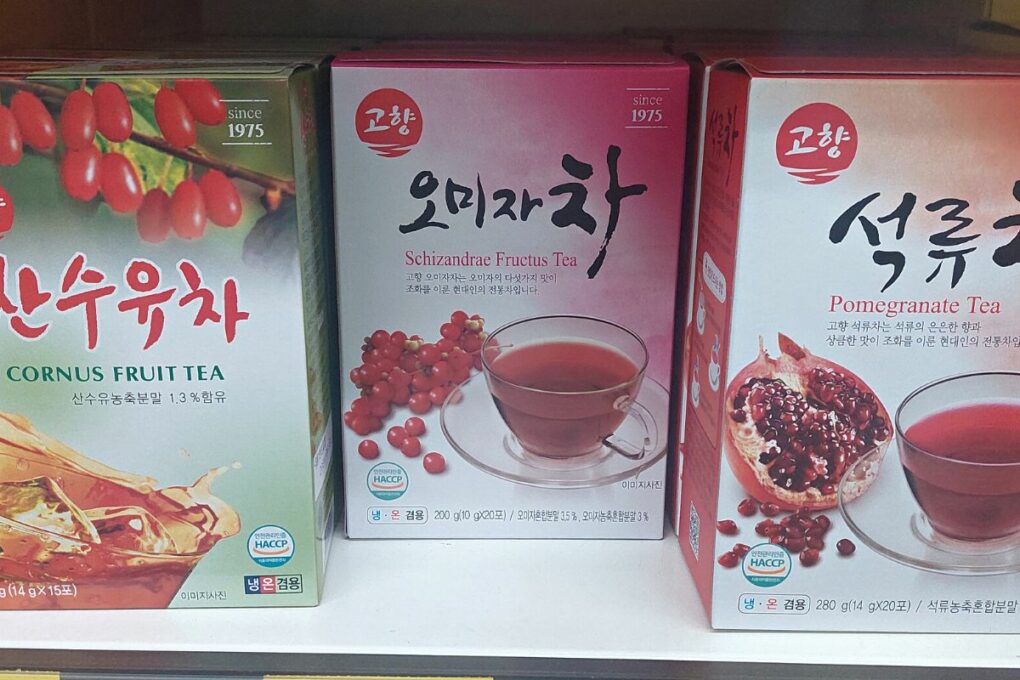
Green Plums (maesil, 매실)
Most people don’t like the bitter taste of maesil, but I find this South Korean fruit very sweet and refreshing, especially if you make a sugary summer smoothie out of it. Its tea version is just as delicious, and you can make some by marinating these fruits with honey or sugar for a month or two.
Maesil is also a great source of fiber and antioxidants, making it incredibly helpful for digestion.
Click here to try green plum tea made with maesil
Cherry Tomatoes (tomato, 토마토)
These cute little tomatoes taste the best if you freeze them a little bit in the freezer. You can also use them to give your meat a bit of flavor or make your salad taste luxurious. These little tomatoes can be found in some K-BBQ places, because it’s thought that this fruit counteracts the greasiness of pork.
If you happen to be on a diet, you might be happy to know that each cherry tomato is about 2 calories, making for a lightweight indulgence.
Click here to try pasta made with cherry tomatoes
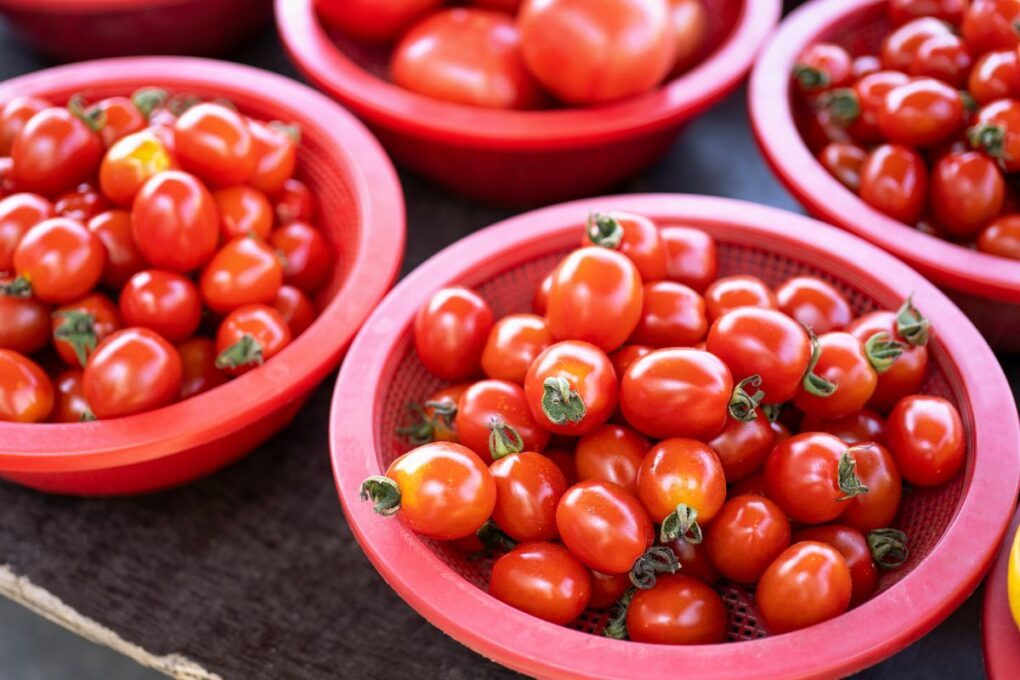
Banana (banana, 바나나)
Those familiar with the drama Reply 1988 may not understand why people from the 80s “go bananas” over this fruit. This is because locals considered it as a treat due to the low importation of the fruit back then. Unfortunately bananas couldn’t grow naturally in Korea’s chilly weather.
As a result, they had to import them from nearby tropical countries, making the fruit relatively expensive. However these days you can buy a bunch for a reasonable price, because they’ve figured out ways to grow banana trees in the southernmost part of the peninsula (see greenhouses in Haenam).
Furthermore, Koreans also have a banana product of their own in the form of banana milk, and foreigners rarely leave the country without having a taste of this delicious drink.

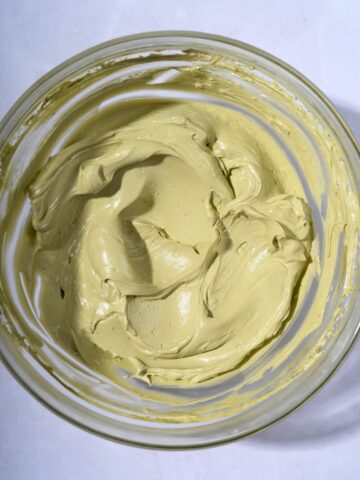
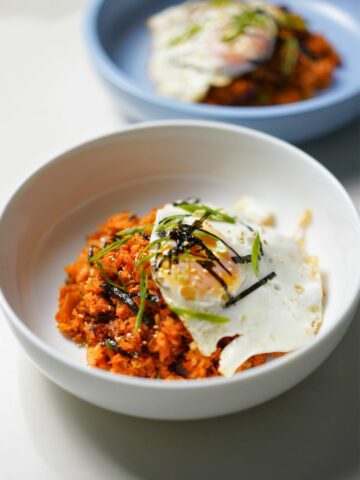
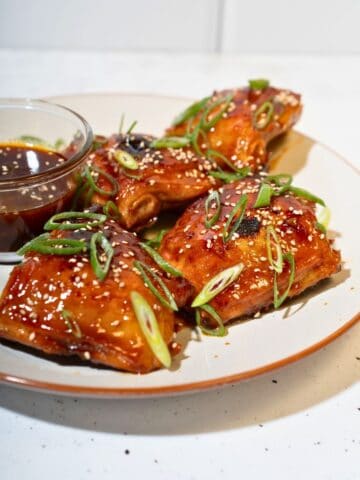

Comments
No Comments